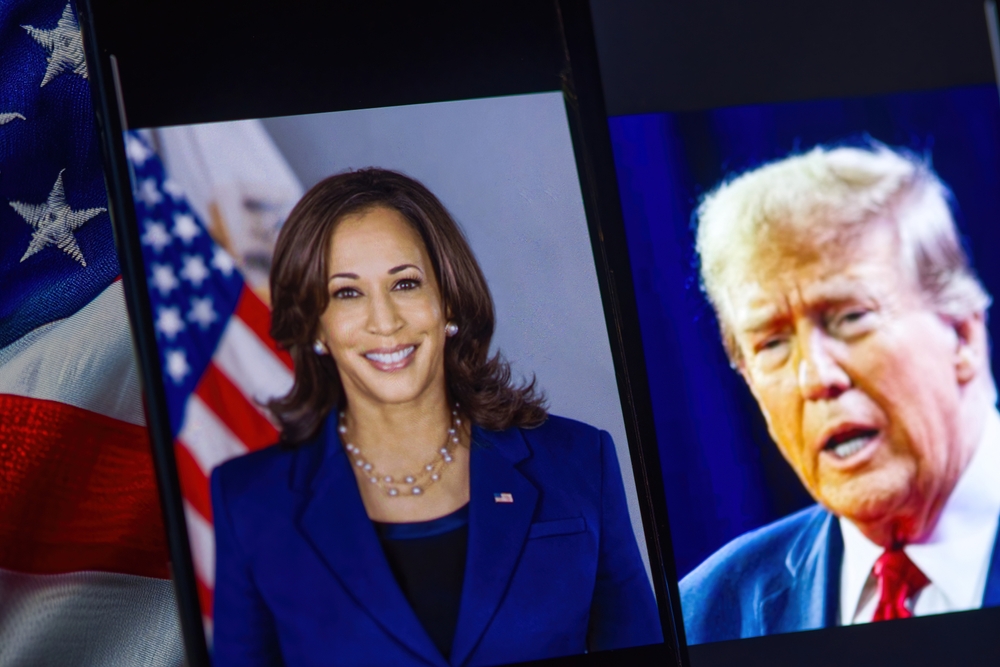
…Skirting foreign policy debates may work for this presidential campaign cycle, but the challenges are not going away…
The 2024 U.S. presidential election is in full swing with candidates talking economic policy but partially skirting round foreign policy challenges.
The foreign policy debate has been limited with most commentary focused on whether the policy will be more “arrogant” or “predictable”, neither of which are informative descriptions for a candidate or directionally insightful as a strategy.
The next U.S. president will face several key issues on day 1 and, while temperament can be part of the test, there is a question of policy answers and details.
Venezuela: President Nicolás Maduro Goes or Stays?
Migrants, migrants, migrants…it is a major issue in the U.S. political dialogue. About 263,000 Venezuelans crossed the U.S. border in 2023, up from roughly 190,000 in 2022. The root causes of this migration, including democratic breakdown, political and social oppression, and a lack of human rights, have seemingly become more ingrained with the latest election victory by President Nicolás Maduro.
The opposition, led by former diplomat Edmundo González Urrutia, collected voting data that suggests it won nearly two-thirds of the vote. What does an unrecognized opposition victory mean? Can there be a negotiated exit for Maduro (rumored to have been offered by the U.S.)? With little hope of change, more Venezuelans will head for the U.S. southern border.
Palestine: Two State Solution?
The war in Gaza is now entering month 11 with an elusive ceasefire agreement being discussed. The war has led to more than 40,000 deaths and the Gaza strip being relegated to “42 million tonnes of rubble.” An estimated 70% of housing has been damaged along with most hospitals and schools.
It comes as no surprise that the ceasefire discussion has an immediate follow-up question: how does the global “we” reconstruct Gaza? Most Palestinians have been displaced and it is not clear what they can return to without a clear reconstruction plan.
Furthermore, what is the ultimate solution? The two-state solution is widely accepted as the international solution, despite more and more Palestinians and Israelis discussing it with a sense of impossibility – how do you connect the Gaza Strip and the West Bank physically and politically?
Saudi Arabia and Israel: A Peace Deal?
For months, Washington has said a deal to normalize diplomatic relations between Saudi Arabia and Israel was near completion. Yet, there remains a few not-so-small stumbling blocks, such as a two-state solution between Israel and Palestine. Saudi officials reportedly are content with an Israeli commitment to a two-state solution without the detailed specifics of a plan – meanwhile, Crown Prince Mohammed bin Salman (commonly known as MBS) is reportedly concerned that there may be a threat upon his life if he accepts this security deal.
The deal could also falter without U.S. Senate support with numerous Democratic senators voicing opposition – a U.S. defense treaty (as part of the security pact) would require ratification from two-thirds of the Senate. Then there is the requirement of reducing security cooperation, such as weapon purchases and intelligence sharing, with China. There are leaders questioning whether the normalization deal is possible or worth the effort as it may not be the panacea that supporters imagine it. Nonetheless, if it does fall apart, then Washington will again need to reconsider how to engage both countries and find cooperation on an issue-by-issue basis? That may be even harder than finalizing the normalization deal.
India: U.S. Ally or Not?
Washington continues to aggressively court India. Still. the prospects of properly “tying the proverbial knot” seems impossible with India focused more on a more non-traditional alliance with the U.S. India wants to avoid being dragged into the U.S. vortex of good and evil where sanctions would mean higher energy costs (as the Indian economy currently benefits from significantly discounted oil and coal from Russia) and Prime Minister Narendra Modi would uncomfortably be placed at the center of potential peace discussions between Russia and Ukraine. Modi, who made trips to Ukraine and Russia within weeks of each other, already signaled a lack of desire to be the messenger between the two countries.
India also has a complicated relationship with China due to a disputed border, China’s ties to Pakistan, an unequal trade relationship, and growing competition for political, social and economic power in Asia – Washington views this chasm as an opportunity, but relationships built on a common enemy are not as strong as relationships built on common ambitions and views. Over time, it will be important for the U.S. and India to bond on the latter.
Russia and Ukraine: A Never-ending War?
The war in Ukraine has passed 30 months with fighting mostly stalled along the frontlines. A surprise Ukrainian incursion into Kursk created some physical movement, though the more significant outcome was the distraction created for Russian troops and the boosted morale for Ukrainian troops. There is the potential Ukraine finds a way to leverage the territory in a negotiated settlement with Russia.
Today, a negotiated settlement appears far away thus what is the ultimate path to peace? Can it even be negotiated or does one side have to surrender? A surrender is unlikely while a negotiation requires finding a credible mediator. The U.S. and China will struggle to be credible while India has said no. A Middle East country, like the UAE or Saudi Arabia, or an African country, such as South Africa could be an option.
Until then, will the U.S., Europe and other allies implement more sanctions, especially targeting countries that help Russia circumvent existing sanctions, as well as continue to supply heavy artillery and weapons? What happens to Ukrainian membership in NATO or access to the E.U.?
Mexico: Immigration and Fentanyl
U.S.-Mexico relations benefit from “friend-shoring” with Mexico supplanting China as the U.S.’s top trading partner. A migrant and fentanyl problem, however, will test them. Mexico has turned into a chokepoint for migrants with U.S. policies, such as the “Remain in Mexico” program and Title 42 (a temporary pandemic-era law that was used to expel asylum-seekers), yet the issue has not turned into a political football in Mexican politics. President Biden’s recent executive orders, which further restricted the application of U.S. asylum, will put more pressure on Mexico to house migrants.
Even with less migrants crossing into the U.S., the fentanyl drug problem remains, despite producers using chemical precursors from China that are already subject to international controls. Some data suggests Mexico is doing less to stop the smuggling of fentanyl versus methamphetamines, which is more commonly sold within the country. What more can be done by countries to stem the fentanyl crisis? The status quo is not working.
China: Taiwan and Fentanyl
Washington and Beijing have a complex bilateral relationship that is both economically interdependent and in competition. China arguably leads the global renewable race with its installed solar photovoltaic capacity, capturing of supply chains for critical minerals, and championing of EVs with big private producers like BYD. That reality drove the passage of the Inflation Reduction Act, which included more than $300 billion allocated for energy and climate investment, and is the impetus for Senator Marco Rubio’s and Senator Mark Warner’s recently introduced bill to combat China’s “monopoly” on critical minerals and related supply chains.
The dispute over Taiwan crosses into this discussion with TSMC (officially Taiwan Semiconductor Manufacturing Company) producing an estimated 90% of the world’s super-advanced semiconductor chips, which are used to power everything from smartphones to artificial intelligence applications. The U.S. requires access to these chips and is both promising to protect Taiwan if China attempts to retake control of the islands and passing legislation, like the CHIPS and Science Act, to strengthen production at home. Are all these bills enough? Tariffs are being tossed around as another piece of the solution. Lastly, let’s not forget the U.S. government claims China is subsidizing the manufacturing of the chemicals used by traffickers to make fentanyl. What can the U.S. do?
The Korean Peninsula: An Emerging Nuclear War?
China and Taiwan may garner more attention, but the tension between the Koreas cannot be ignored. Polls show that a majority of South Koreans support the pursuit of nuclear weapons with the growing nuclear arsenal in North Korea and a sense of uncertainty around long-term support and nuclear deterrence from the U.S. (despite a recent agreement between the two allies on joint nuclear deterrence guidelines.) An arms race would create instability with the world hoping untested leaders on both sides do not prematurely hit the nuclear button. This would be a new political realm for the Koreas.
